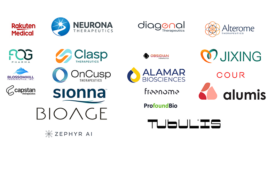
[Photo by Monstera via Pexels]
Even before the pandemic, small to midsize biotechs were gaining ground, thanks in part to their nimbler adoption of new technologies, faster-paced innovation and partnerships with larger companies hoping to overcome internal stagnation and offset impending patent expirations.
EY reports that new molecular entity (NME) approvals attributed to small biotechs with revenues less than $1 billion were around 10% in 2017. By 2021, that reached 30%. McKinsey & Company reports the pace of innovation has also been increasing, with assets passing through early phase trials up to 50% faster than before, though the development of later stage assets has remained flat.
The downturn spurring hesitancy
The eventual market downturn meant biotechs must either travel the unfamiliar path toward commercialization or prove their worth to increasingly trepidatious investors. Today, Big Pharmas are more measured in their risk-taking, with mergers and acquisitions gradually giving way to joint ventures and partnerships. Investors are less willing to jump in early, often delaying their moves until after Phase 2 or 3 trials, demanding data-backed validation and setting strict milestones. Biotechs with early-phase assets or platforms no longer have an easy path to IPO and, instead, face a growing demand to differentiate themselves in a sea of similar start-ups.
Many companies are waiting out the downturn, staying private for as long as possible while stretching budgets and streamlining operations; some are even tempering R&D efforts or joining scores of competitors focused on indications with well-validated assays and endpoints — a strategy that some fear could stifle innovation in the long-run.
For many biotechs, delivering rapid innovation with good returns seems insurmountable when faced with myriad other challenges, such as fewer late-stage assets, heightened consumer expectations, new pricing legislation and increased cyber threats. As a result, companies must adjust their strategic priorities to deliver on the market’s demands. Deloitte recently reported on the key priorities for biopharmas to stay competitive. Aside from expanding global reach, the top priorities include strengthening R&D and improving digital and IT technologies.
How a scalable R&D platform supports biotech investment
As biotechs grow, the systems that sufficed for small teams typically don’t scale well and instead start hindering progress. As a result, companies can either build an end-to-end cheminformatics discovery platform themselves or find a partner whose open platform can help them seamlessly integrate the diverse applications, workflows and data they need.
Adopting a flexible, scalable R&D platform reduces the onus of integrating internal systems, such as those used for study capture, compound registration, inventory management, assay design and data management. Companies can then focus their time, money and expertise on what matters most — the science that will help them make better therapies faster and increase their chances of success.
Support transformational change
Biotechs must analyze their R&D workflows and identify changes that will impact a few teams’ processes and improve outcomes across their organizations.
Many drug-discovery companies should prioritize biotech investment that involves technology that frees decision-makers to focus on science, not cumbersome processes. Unfortunately, several obstacles often stand in the way of this goal, including disconnected R&D systems, workflow complexity, compromised data value, high failure rates in small molecule drug discovery, and structural complexity and diversification in biologics discovery. Nevertheless, companies can overcome these obstacles through biotech investment in tools that streamline end-to-end workflows, accelerate research, facilitate collaboration and improve decision-making.
Creating a strong data foundation
Big data has become synonymous with big possibilities. Companies across industries are looking to both gain competitive advantages and generate revenues. They’re also pouring tens of millions of dollars into AI initiatives each year. Unfortunately, many biopharmas face a harsh reality — their data are ill-suited for utilization in AI for various reasons, such as poor access, lack of standardization, inefficient annotation, questionable integrity and limited traceability. In a recent survey of biopharma and medtech companies, Deloitte found that nearly 30% of life science leaders admit that data struggles negatively impact their AI initiatives.
Biotechs must create a strong data foundation to benefit from AI and machine learning. That means capturing clean and trustworthy research data, removing data silos and provisioning model-quality data.
Tackling regulatory readiness
An increasingly common regulatory issue facing leaders is data integrity, which can greatly impact a drug’s safety, efficacy and quality. Such violations have become more common as labs shift from paper to electronic record keeping, with the FDA releasing industry guidance. While egregious offenses like falsifying data make headlines, the FDA’s transparent sharing of warning letters highlights many less-headline-grabbing offenses, such as data loss, missing metadata, uninvestigated sample elimination or reprocessing, security issues and inadequate audits.
Luckily, labs can choose solutions that help mitigate the risk of violations, such as automatically recording experiment details and audit trails, requiring signatures and restricting data manipulation or deletion. Upholding the integrity and security of data generated throughout a product’s entire lifecycle better ensures regulatory readiness while enabling that product to become more compelling to investors.

Haydn Boehm
While biotechs face new challenges, history shows the industry has always bounced back. McKinsey projects the market will rebound as long as companies carefully focus their talent, budgets and don’t lose sight of the fundamentals — increasing regulatory clarity and commercial viability for innovative therapies addressing unmet needs.
Haydn Boehm is director of product marketing at Dotmatics, a leader in R&D scientific software connecting science, data, and decision-making. Its enterprise R&D platform and scientists’ favorite applications drive efficiency and accelerate innovation.
Filed Under: Drug Discovery and Development



